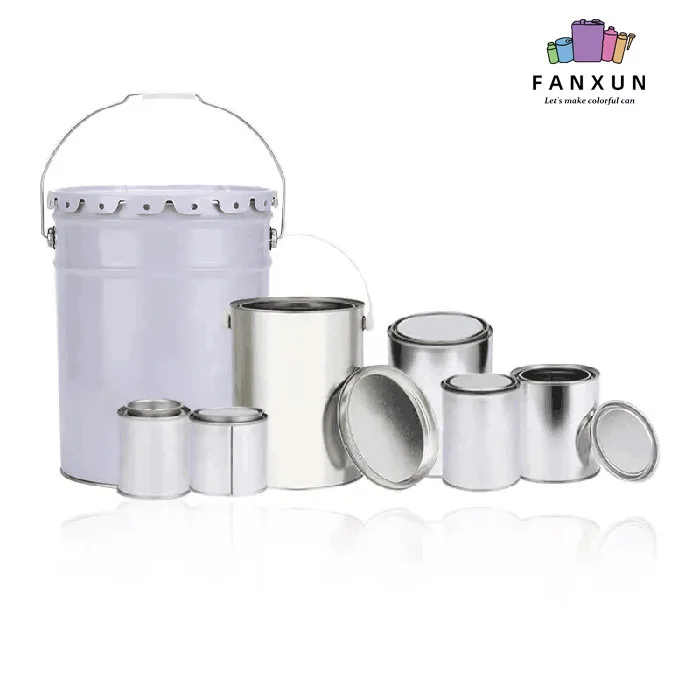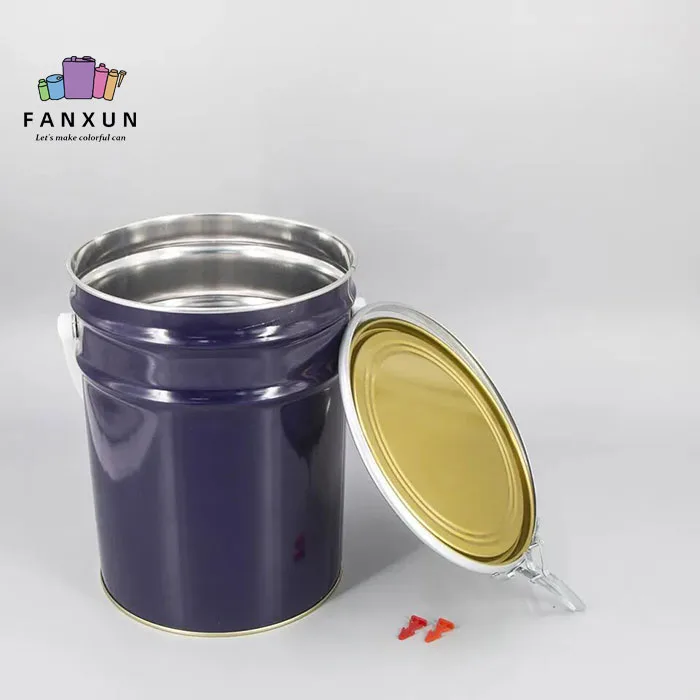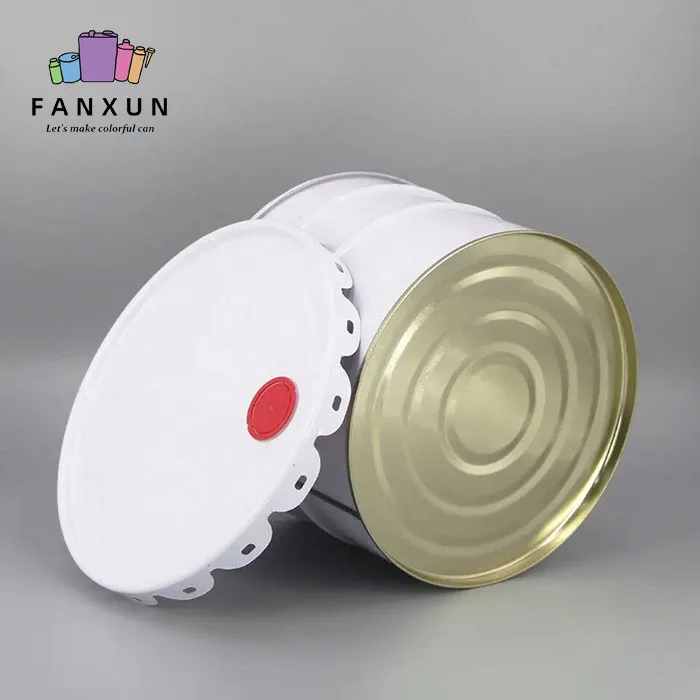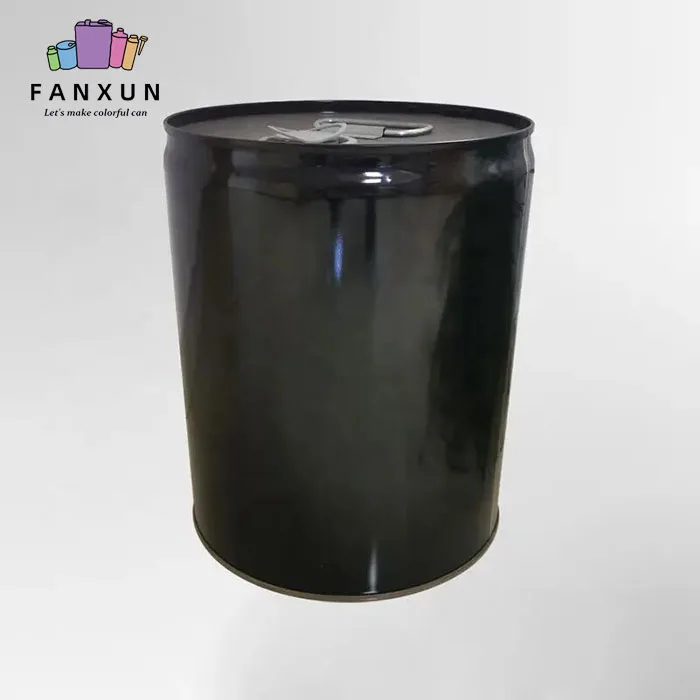Choosing the right metal barrel (metal barrel or barrel) specifications often depends on your specific uses and needs
Dung tích (volume) of metal barrel
The capacity of a metal barrel is usually measured in gallons or liters. Here are some common metal drum capacity options:
- Small metal buckets: Small metal buckets usually have a smaller capacity, usually less than 5 gallons (about 19 liters). They are suitable for storing, transporting or handling relatively small liquids or items.
- Medium-sized metal buckets: The capacity of medium-sized metal buckets is usually between 5 gallons and 30 gallons (about 19 liters and 113 liters). These barrels are suitable for general industrial use, storage and shipping needs.
- Large metal buckets: The capacity of large metal buckets can exceed 30 gallons, and can reach 50 gallons (approximately 189 liters) or more depending on different specifications and needs. These large capacity drums are commonly used in industry and applications where large quantities of liquids or items are stored.


Choosing the capacity of a metal bucket should be determined based on your specific needs. Here are some considerations:
- Product quantity: If you need to store or transport a large amount of products, you may need large-capacity metal drums.
- Frequency of use: If you need to use the metal bucket frequently, you may need an appropriately sized container to reduce the frequency of multiple loading and unloading.
- Space limitations: Consider the space where you store or use metal buckets and make sure the size of the bucket is appropriate for your work environment.
- Transportation requirements: If you plan to transport liquids or items, capacity selection should also comply with transportation regulations and requirements.
- Product characteristics: Some products may require metal drums of specific capacity to meet their packaging, storage or transportation requirements.
Uses of metal barrel:
Metal barrels have many uses and are widely used in different industries and fields because of their strength, durability and versatility. Here are some common uses for metal buckets:
- Storage and transportation of liquids: Metal barrels are commonly used to store and transport various liquids, including chemicals, chất bôi trơn, fuels, paints, cleaning agents, food ingredients and drinking water. Its sealing properties and corrosion resistance make it ideal for liquid storage.
- Industrial waste treatment: Metal barrels can be used to safely store and process industrial waste, including hazardous waste, waste liquids, waste oil and waste paint. They help ensure that waste does not leak or cause harm to the environment during transportation and disposal.
- Food storage: Stainless steel metal barrels are usually used to store food raw materials, grains, fruits, vegetables and edible oil. Its hygiene, ease of cleaning and corrosion resistance make it suitable for use in food processing and manufacturing.
- Storage of hazardous chemicals: Metal barrels are often used to store hazardous chemicals, such as corrosive liquids, toxic substances and flammable substances. Its robustness and sealing properties help prevent the leakage of hazardous materials.
- Garbage and waste management: Metal buckets can be used for the collection and transportation of garbage, construction waste, recyclables, vân vân. They are commonly used on construction sites, municipal waste collection and waste disposal.
- Warehousing and Distribution: Metal barrels can be used to store and distribute a variety of products, including industrial raw materials, liquids, granules, and bulk items. They are commonly used in logistics and supply chain management.
- Agricultural use: The agricultural industry uses metal barrels to store and transport fertilizers, pesticides, feed and agricultural products. The sturdiness of metal drums helps them withstand harsh conditions in agricultural environments.
- Home and outdoor activities: Metal barrels are sometimes used as outdoor storage containers, gardening tool storage, campfire containers, vân vân.
- Decoration and Furniture: Some people repurpose discarded metal barrels into decoration and furniture making to create unique home designs.
Note that metal buckets are used in a variety of ways and can be customized and adapted to specific needs. Selecting the appropriate metal drum depends on factors such as your application scenario, material requirements, capacity needs, and environmental conditions.


Material and sealing of metal barrel
The material and sealing performance of a metal barrel are important factors that determine its performance and applicability. Here is information about metal drum materials and tightness:
Vật liệu:
- Stainless Steel: Stainless steel metal barrels have excellent corrosion resistance and chemical stability, and are suitable for storing and transporting a variety of liquids and chemicals, including food raw materials, chemicals and pharmaceuticals. They are generally hygienic and easy to clean, so they are widely used in the food industry and pharmaceutical industry.
- Carbon Steel: Carbon steel metal drums are a sturdy choice for industrial waste disposal and storage of paints, chất bôi trơn, vân vân. Tuy nhiên, they may be more susceptible to corrosion and may require linings or special coatings to increase corrosion resistance.
- Other alloys: In addition to stainless steel and carbon steel, there are other metal alloys, such as aluminum alloys, vân vân., which can be selected according to specific needs. Aluminum alloy metal drums are lightweight and have good corrosion resistance and are commonly used in certain food and chemical applications.
Sealing:
- Sealing: Metal barrels are usually designed to have good sealing to prevent liquid leakage or external contaminants from entering. This can be achieved with gaskets, rubber gaskets or special seals.
- Seal types: Seals can be divided into different types, including rubber gasket seals, threaded cap seals, spring seals, vân vân. The choice of seal type depends on the specific application and product requirements.
- Sealing performance: The sealing performance of metal barrels is usually tested and certified to ensure that it complies with relevant regulations and standards. Some metal drums may have a high degree of sealing that prevents liquids from leaking, even during transportation and storage.
- Leak-proof design: Some metal barrels are also designed to be leak-proof so that liquid can be collected and controlled in the event of accidental leakage.
When selecting a metal drum, consider the characteristics of the product, storage conditions and transportation needs to ensure that you choose a metal drum with the appropriate material and sealing properties to meet your needs and comply with regulations. Consult with the supplier or manufacturer of metal drums for professional advice on materials and tightness.
metal barrel tray and brackets and durability
Metal drum pallets and racks are design elements that increase the stability, stackability and handling of metal drums, thereby enhancing their durability. Here’s information about metal drum pallets, racks, and durability:
Trays and stands:
- Pallets: A pallet is a platform usually used to lift metal barrels off the ground and provide support for them. Pallets help maintain the stability of the drum, prevent liquid leakage and make metal drums easy to handle with a forklift or by hand. Pallet designs often allow metal drums to be stacked with other pallets for efficient storage and transportation.
- Racks: Racks are a support structure that can be used to store multiple metal barrels and increase storage density. Metal drum stands are commonly used in warehouses, factories or production environments, they allow metal drums to be stored vertically, saving space and providing an easily accessible storage solution.
Durability:
The durability of a metal bucket depends on several factors:
- Vật liệu: Stainless steel metal barrels usually have a longer life because they are more resistant to corrosion and oxidation. Carbon steel metal drums may require special coatings or linings to increase corrosion resistance.
- Lớp phủ: Some metal barrels may be specially coated or treated to improve their corrosion resistance and wear resistance. These coatings protect the surface of the barrel and extend its life.
- Usage environment: The service life of metal barrels may be shorter in harsh environments. Factors such as high temperature, chemical exposure, and physical damage can affect the durability of metal drums.
- Maintenance and maintenance: Regular maintenance and upkeep can extend the service life of metal barrels. This includes cleaning, inspecting seals and gaskets, and promptly replacing damaged parts.
- Loading and unloading: The loading and unloading method of metal barrels will also affect their durability. Proper handling and use methods help prevent damage and deformation.
Choosing metal drums with pallets, stands and durability ensures they remain stable and intact during storage and transportation. Consult with the supplier or manufacturer of metal drums for recommendations on support structures, drum materials, and adaptation to specific environments to meet your specific needs and increase the durability of your metal drums.
